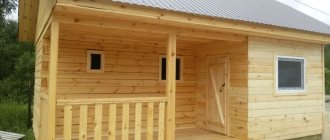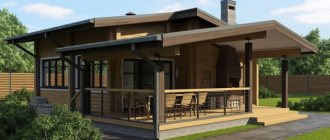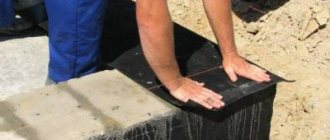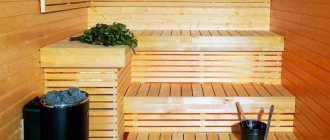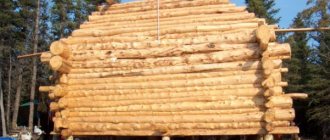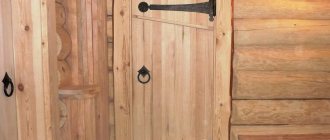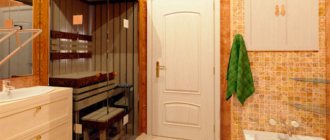Baths in Rus' have long been held in high esteem. It was a favorite place for the whole family, where they could relax and unwind, restore health, and carry out deep cleansing of the body and hygiene procedures. They were treated in the baths and gave birth. It was a whole home complex for every family need. In the modern world, traditional baths, although they have retained their originality, have been somewhat transformed into more comfortable and functional saunas.
The site presents projects of Finnish houses with a sauna, recommendations from experts on use, as well as advice from experienced bath attendants on how to spend time in a Finnish sauna with maximum benefit.
Brief overview of the article
- The emergence of saunas
- What does a Finnish sauna look like and its purpose?
- Differences between a bathhouse and a sauna
- Why visit the baths
- Features of the procedures
- Variety of designs for saunas
- Ready-made complexes
- Makeshift buildings
- Construction materials
- Use of ovens
- Photo of a Finnish sauna
The emergence of saunas
There are more than three million saunas in Finland alone. The tradition of steaming appeared two thousand years ago. The first steam rooms were deep pits lined with stones and heated on one side. The word comes from Finnish and Sami dialects. And the emergence of Finnish saunas was facilitated by a happy accident.
As an ancient legend says, one Finn’s roof began to leak and raindrops fell on the hot coals. This filled the room with a pleasant, warm steam from the evaporation of water. Over time, a mandatory procedure appeared involving dousing with cold water or diving into snowdrifts.
What does a Finnish sauna look like and its purpose?
The photo of a Finnish sauna shows the differences between a Russian bath and a sauna, and presents possible options for arranging a steam room for small and large rooms.
You can set up a small sauna in a city apartment, you can use public baths, and for those who like frequent bath procedures, there are options with separate sauna houses in a rural, picturesque, natural area. Country buildings are rectangular houses with changing rooms, steam rooms, terraces and swimming pools.
As the Finns themselves, who know a lot about saunas, believe, you can’t drink alcohol, talk loudly, or figure out problems in steam rooms. Steam helps to get rid of vices and bad habits. If you are invited to the sauna, then this shows special honor. Taking a steam bath in a sauna is a kind of ritual of cleansing and restoration.
Contraindications
It is important not to forget about contraindications for visiting the sauna. You can't go there if:
- body temperature is higher than normal;
- infectious disease confirmed;
- a non-infectious disease has worsened;
- have cancer;
- Serious problems with the heart, blood vessels, skin and lungs were discovered.
Anyone over 60 years of age who suffers from chronic inflammation or high blood pressure can visit a Finnish bath only with the permission of a doctor. It is unacceptable for children under 4 years of age to steam in a sauna; older children require a full examination and the consent of a doctor. By following the recommendations for building a Finnish sauna, arranging its interior space and using a sauna, you can achieve good results in construction and improve your health.
See below for more details.
Differences between a bathhouse and a sauna
The main difference between saunas is the effect of dry heat on the body. Finnish sauna stoves increase the air temperature in the room to 110 °C with a total humidity of only 10-20%.
Low humidity allows the body to easily tolerate high temperatures. Such procedures strengthen the immune system, increase performance and help strengthen the emotional state.
Bathhouse from the inside: designer tips for creating a steam room interior
It’s probably worth getting a little away from the specifics of styles and giving a few tips that apply to any styles in the bathhouse, because they affect general color decisions.
Light and dark. Most people already know that light colors create the illusion of a larger room than it actually is, and dark colors create the illusion of a smaller room. But by visually increasing the volume, we must fill it so that it does not look empty. A variety of color accents distributed in space are suitable for this.
If you choose dark, then even a reduction in volume can be played out correctly - as creating intimacy and comfort in your bathhouse . To do this, the number of objects in the room should be small, and they themselves should be proportional to the size of the room.
ADVICE! If we are talking about a small steam room in a bathhouse, hanging loungers will visually take up less space than a stepped “pyramid” sewn up on all sides.
In a dark room, bright colors acquire even greater brightness and saturation.
the monotony of a space painted in one neutral color if you interest the eye with furniture details and color spots. Look on the Internet for examples of Scandinavian style - plain walls, simple furniture, but bright objects make it not boring and very attractive.
It is also worth remembering that the human eye is constantly looking for correspondence, patterns, and we catch harmony where there is a visual “rhyme” - the color of the lampshade and the color of textiles, for example. Or playing with some form - round or linear - in the decoration of the walls and the shape of the bathhouse furniture.
However, there are no unshakable rules of composition - everything is always decided by the sense of proportion and taste of a particular person.
Why visit the baths
The steam room is preheated to the desired temperature. When a person stays in such a room for 10-15 minutes, intense sweating begins. Together with sweat, harmful, toxic substances are removed from the body, which helps cleanse the body, normalize the functioning of internal organs, and improve well-being.
The procedures have a hardening, healing effect. And natural wood, which is used to decorate saunas, has an additional therapeutic effect on the respiratory system.
A sharp change in temperature conditions with the obligatory dousing with cold water, diving into a lake or snow after steaming has a positive effect on the immune system, improves health, and increases the body's resistance to viruses.
Construction process
The first thing you need to decide is what shape you want to give your future bathhouse, what compartments you will create in the building, how many people it will need to accommodate. It is also necessary to take into account that a bathhouse is a room with a high level of humidity, and wood that is not protected from the effects of steam and water may suffer, becoming covered with mold and mildew. Having thought through these nuances and decided on the perimeter of the structure, you can proceed to the design stage. Separately, you need to create a design for the foundations, and then designs for the required floors.
After creating the project, it is necessary to carry out detailed planning work. At this stage, you need to decide how much material is needed and what tools are needed for this. It is also necessary to find a supplier from whom you can purchase the required amount of construction raw materials at a favorable price, while also having a sufficiently high quality. Here reviews from friends can come to the rescue, but you can also evaluate the quality of the wood yourself by first reading the necessary literature on this topic. Various companies produce ready-made kits, after purchasing which you just have to put them together. Still, despite the reputation of the company from which you purchased the materials, it is necessary to carefully inspect the wood and treat it with an additional layer of protective coatings.
Insulation of a cobblestone bath: fiber insulation, foil vapor barrier, clapboard lining.
Stages of roofing
When it comes to construction, first determine the type of foundation you will use. Again, this is a very important part of the structure, because not only the durability of the building depends on the quality of the foundations, but also, possibly, the lives of people relaxing in this bathhouse. Each master prefers a different type of foundation. But this process also depends on the type of soil, groundwater level and particle size distribution. As a result, you can choose either a light fawn or a strip foundation. If you opted for tape, then this is really the right decision. If only because such a base will support a system of any weight. That is, if you are not able to calculate the actual weight of the building as accurately as possible, then such a foundation is guaranteed to provide you with stability and strength.
When installing this type of foundation, it is necessary to take into account the depth of soil freezing; professionals advise installing it 20 cm lower than this depth.
Since in our region the number of cycles of defrosting and refreezing of soil varies greatly in winter, this precaution will help reduce the load on the foundation
Insulation of a bathhouse from the inside
Laying a foundation for a timber bath
When all the features of local soils have been taken into account, you can begin marking the area and dividing it along the axes of the building. Therefore, after this it is necessary to dig a pit of the required width, height and length. After that, it’s time to place the foundation pad in the pit, strictly along the axes. Having created waterproofing, you can easily begin placing the foundation blocks directly on the pillows.
A foundation is built on a base of sand and crushed stone, and the process of creating it is completed with the correct screed, as well as a layer of concrete, which provides protection from external destructive factors.
Construction of a bathhouse from timber
Bathhouse roof made of metal tiles
Features of the procedures
Among the advantages of Finnish sauna procedures, the following should be noted:
- The air in the steam room is dry, which allows you to tolerate high temperatures with ease;
- The heating temperature in the steam room can reach 120 °C. The optimal temperature is 85-90 oC;
- The internal walls are sheathed only with natural wood panels from deciduous trees; coniferous trees emit a lot of resin;
- Brooms are not used for going to the sauna. If desired, and to create an aromatic atmosphere, you can use soft birch and juniper brooms.
- Unlike Russian baths, the shelves in saunas are located on several floors. The higher the shelf, the hotter it is. You can sit anywhere depending on how you feel and the desired effect;
- Dry air has a beneficial effect on diseases of the lungs and bronchial tubes. Systematic procedures activate metabolic processes and help get rid of extra pounds. In one visit, depending on your body type, you can lose from 0.5 to 2 kg of fat;
- When visiting the sauna, you must first wash in the shower without soap and shampoo, try not to wet your head so as not to cause overheating. It is advisable to wear a special cap on your head. The number of visits to the steam room can be several, 10 minutes each. It is not recommended to visit the sauna more than once a week;
- During the procedures, it is recommended to drink warm tea and herbal decoctions that will help replenish fluid loss in the body;
- After your visit, take a half-hour rest to recuperate.
Advantages of laminated veneer lumber
There are several undeniable advantages in construction:
- Durability and great mechanical strength, which is achieved during the production process. The glued parts of the timber have no internal stress, so their deformation, even throughout their entire service life, is practically excluded.
- Low thermal conductivity, also achieved by manufacturing technology from dry log components. With this method, there are no cracks or voids inside the product in which moisture can accumulate, and the percentage of finished product shrinkage is no more than 0.5%. When building baths, such indicators can be decisive when choosing the material for the construction.
- A barrel sauna built from laminated veneer lumber contains a minimum of connecting elements. The integrity of the structure is ensured with the help of ridges, grooves and locks, which, when manufactured by gluing, have sufficient strength to securely fasten structural elements.
Just as in Russia steam rooms have been known since ancient times and many traditions, signs and folklore elements have arisen around them, in Finland the sauna has an important place in the culture of the country - even real championships in sauna sports are held
Variety of designs for saunas
For each home, you can choose an individual Finnish sauna project. This can be a ready-made steam room complex with an area of 1 sq. m. meters to full saunas with a separate entrance and building. Each type has its pros and cons, which fit perfectly into both city apartments and country residences.
Foundation
Regardless of the type of foundation chosen, you should consider in advance the presence of a centralized water drainage system. It will not be superfluous to carry out a soil analysis before construction to understand what type of foundation is most suitable. The foundation must be strong and frost-resistant.
Timber is a lightweight material that does not require a solid foundation. But for two-story baths, it is worth choosing a strip foundation with a depth of up to 0.5 meters; the base of the bath should be above ground level.
Quite often, a columnar foundation is used - these are concrete beams made of blocks and bricks, erected to a certain height. They are installed at a distance of 2 meters from each other along the entire perimeter of the future bathhouse, at the intersections of load-bearing partitions, in the place where the sauna stove is installed. However, it is not recommended to install it on clay soils.
Steel tubular supports with a propeller blade are screwed into the ground below its freezing level with the same pitch as in the previous version. It can be installed even on a steep slope.
Ready-made complexes
The Finnish sauna harvia is very popular among lovers of bath treatments. On the construction market you can find ready-made complexes and individual components for baths, saunas, and living rooms.
These include wood-burning and electric fireplaces, compact custom-made steam rooms that will fit optimally into your room and allow you to regularly enjoy warm treatments.
Makeshift buildings
If you know how to work with construction tools, you can make a sauna with your own hands. Before starting construction, it is necessary to determine the location of the steam room, select materials, provide electrical wiring and take care of the safety of all elements.
A classic option that requires a minimum of costs and investment is a Finnish sauna in the form of a barrel. This is a practical, mobile type of sauna that can be moved from place to place, where the absence of sharp corners creates a calm, cozy atmosphere, and its small size allows it to be conveniently placed on the site.
Real wooden barrels made from deciduous trees are used as a base. They are equipped with floor grids, removable shelves, a drain pipe and a steam generator. The device quickly reaches the required temperature, accommodates 2-4 people and is suitable for daily use.
Equipment
When equipping a sauna, special attention is paid to the choice of stove. The electric oven is easy to use, safe, compact
Many models, in addition to manual control, are equipped with a remote control. Another advantage of electric ovens is the various installation options. Thus, hanging models will help save space in small rooms.
For lovers of live fire, a wood-burning stove is suitable. But it should be taken into account that installing a wood-burning heater is a complex process and will require the organization of a chimney and ventilation.
Regardless of the type of stove (electric or wood-burning), when choosing and installing it, you should adhere to the following requirements:
the power must correspond to the following indicators - for 1 m3 of steam room there are 1-1.5 kilowatts of oven power (for example, a 6 kW oven can be installed in rooms up to 9 m3); special attention is paid to choosing a place to install the stove - guests should calmly move around the steam room without the risk of getting burns.
And, of course, mandatory fire insulation of the stove in places adjacent to the walls (if a suspended model is used) and the floor. When installing an electric furnace, you should follow the manufacturer's recommendations.
Construction materials
Aluminum foil, insulation, vapor barrier film, wooden slats and panels, ceramic tiles, tempered glass for doors and windows are used as finishing materials.
The materials selected are natural, environmentally friendly, able to withstand sudden temperature changes without deformation or corrosion, and do not emit foreign odors.
Use of ovens
The sauna stoves used are heated metal structures filled with stones. Heating can be from an open fire or an electric oven.
Any stones can be used for filling. The main condition is that they must be of medium size in order to retain heat long enough. In an isolated steam room, steam is obtained by pouring water over hot stones. Steam ensures increased sweating and makes breathing easier.
Finnish saunas are very popular in different countries.

